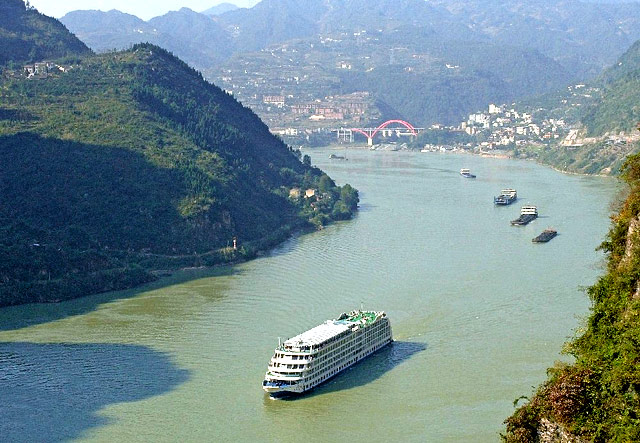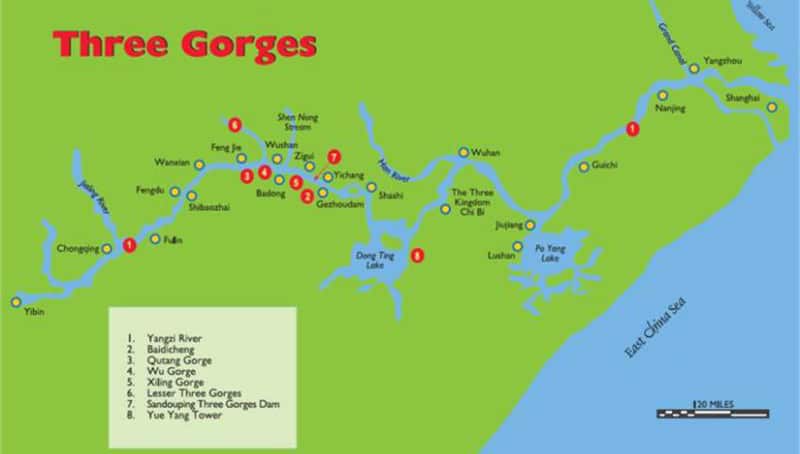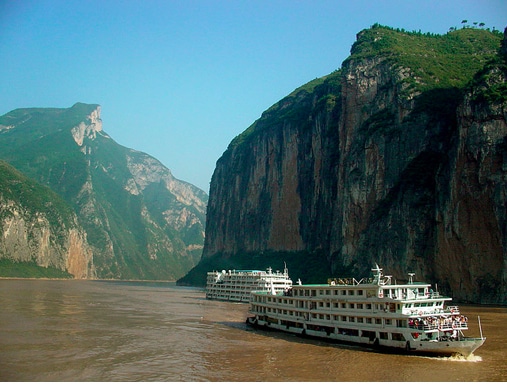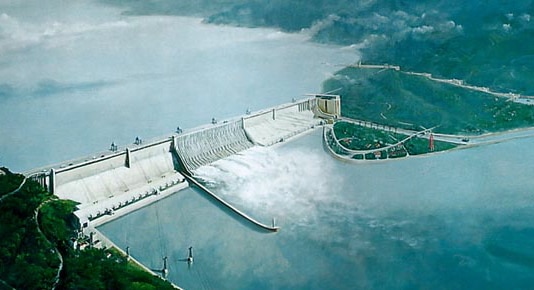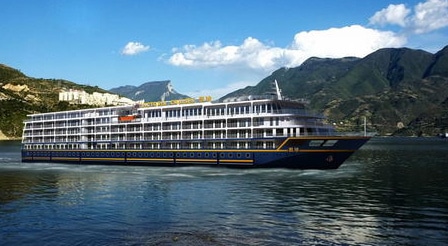Who doesn’t love a leisurely river cruise? Imagine kicking back with a drink while you soak in the magical sights of the Yangtze River.
If it weren’t for all the other tourist boats, you can almost imagine that you’ve traveled back in time: fishermen scooping fish with their big nets, families working their rice fields, monasteries perched high on cliff walls. While this traditional way of life is fast disappearing, the beauty of the Yangtze remains timeless.
Rising high in the mountains above Tibet, the Yangtze (also known in China as the Chang Jiang or “Long River”) is the third longest river in the world, after the Amazon and the Nile rivers.
Immensely fond of their proverbs, the Chinese have a saying: If you haven’t traveled up the Great River, you haven’t been anywhere.
One of China’s most popular tourist attractions and experiences, the Yangtze River cruise is best appreciated heading downstream—a 400 mile (650km) stretch of the river starting from Chongqing down to Yichang. This stretch is located in the Sichuan province—which literally translates to “four rivers”—with the Yangtze as the most important river.
Steeped in myth and legend, that stretch of the Yangtze was until recently notoriously difficult to navigate and treacherous. Before the Three Gorges Dam raised water levels by over 100m—effectively turning the stretch into a huge, placid lake—its waters were squeezed between narrow, vertical limestone cliffs over raging rapids.
And while the scenery isn’t quite as stellar before the higher water levels, no trip to China is complete without a trip down the Yangtze.
More Info & History
I guess they really like dams here because almost half of all the dams in the world are in China. And of course the grand daddy of them all is the Three Gorges Dam, which you’ll see on any boat tour that you’ll take.
The world’s largest dam at 606 feet tall and spanning 1.5 miles across the Yangzi River, the 3G Dam, once fully operational, is expected to power 26 generators and generate 85 billion kilowatt-hours of electricity a year. That’s a lot of power. By comparison, the Hoover Dam—built in the 1930’s—generates only about 4 billion.
A symbol of China’s rush to modernize, the Three Gorges project is China’s largest since the Great Wall in the second century BC. Over 25,000 workers worked over 13 years to build the dam, at cost of about US$26 billion (although some estimate the final cost to be much more).
Why Was Three Gorges Dam Built?
There were two main reasons for building the Three Gorges Dam:
- To provide much needed electricity for China’s growing energy needs
- To reduce floods along the river, which have killed an estimated million Chinese in the last hundred years alone.
But the project was controversial from the very beginning in 1993. For one, the slowly rising water levels displaced some 1.5 million residents by drowning their ancestral villages, as well as sites of historical interest. While many were relocated nearby, tens of thousands were forced to move to Tibet, in what some see as an effort to dilute the native population with Han Chinese.
Also, environmentalists decry the rapid and unprecedented change to natural environment, including the loss of rare and endangered species such as the Yangzi river dolphin, Yangzi alligator, and Siberian crane. But like most things in China (or most everywhere else in the world it seems), those interests unfortunately take a backseat to growth and development.
A more practical criticism is that the dam is located in a tectonic fault earthquake zone. Even though the dam is supposedly designed to withstand a missile attack, no one knows exactly what kind of damage a huge earthquake could inflict. What’s more, critics have pointed to corruption and corner cutting (what the Chinese call “tofu engineering” as witnessed in 2008 Sichuan earthquake) even for this important project, which could potentially put millions of lives in danger. Are we going to find out one day that this thing was made mostly of paper mache?
Types of Yangtze River Cruises
There are 3 main ways of visiting the Yangtze River:
International and domestic cruise boats, which typically are 3 night cruises (but some of the more upscale leisurely ones take 5 days). As expected, the international boats are must more luxurious—some complete with gyms, huge viewing decks and lounges, and several dining areas. You get what you pay for, so you’ll find a considerable step down in costs and comforts with the domestic cruises, which are typically divided into 4 different classes.
Ferries are crowded and noisy but a pretty good value for what you get. Like the other cruises, they make stops along the way (but make sure to get back on time or they’ll leave without you!). You’ll notice the local Chinese tourists elbowing for pole position—get to dock early and claim your bed as soon as you can. Even better, wake up early and catch one of the earlier ferries. Also bring your own snacks as well as some warmer clothes during winter months.
Hydrofoils go straight through without making any stops along the way. The whole trip takes just over 12 hours and is only recommended if you’re really pressed for time.

